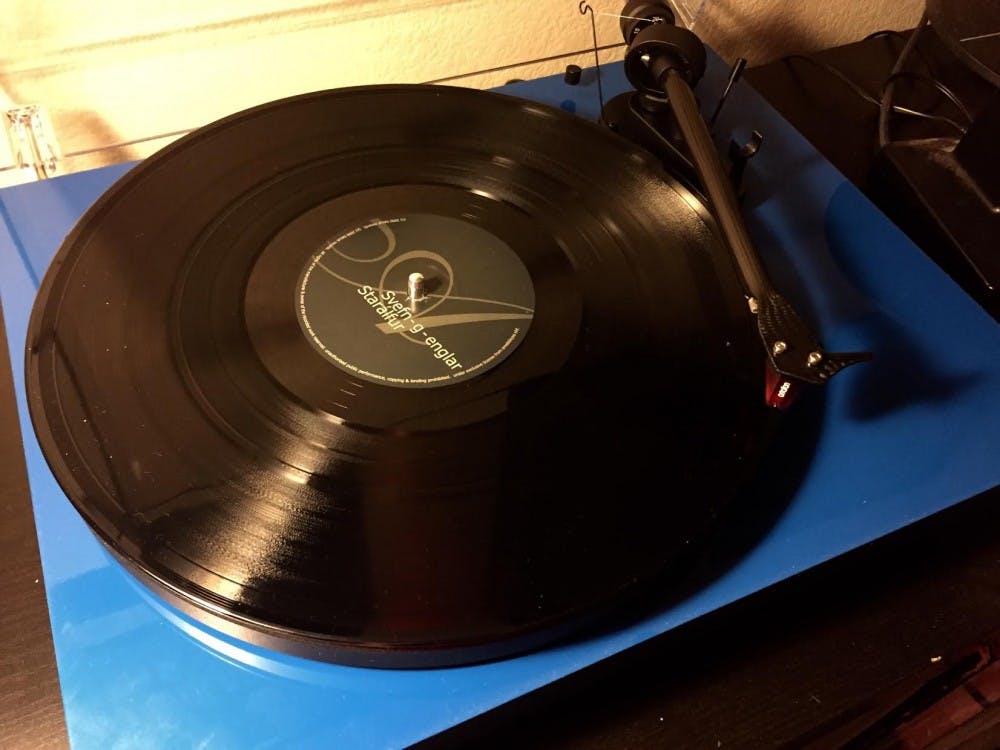Vinyl is back and in a big way. You no longer need to be middle aged or a “local coffee shop hero hipster” to indulge in audiophile debauchery. All that’s required is a decent record player, a stereo, some speakers and half of a brain to plug it all in.
Unfortunately, as stigmas are erased and popular bands flood the market with vinyl releases, the invisible hand of big business has intervened with hot “entry-level” garbage like Crosley or those hideous turntable/CD player/radio combinations.
Thousands purchase these plastic abominations because they’re cheaper and convenient. And while the allure of a $100 turntable is tantalizing, you really do get what you pay for. But hey, if music is disposable and unimportant to you, then by all means buy one of these toys and ruin your record collection. I’m just here to tell you that ignorance isn’t always blissful and truly excellent turntables exist under the $500 range.
Sifting through turntable jargon is daunting, but even a basic understanding of how to spot quality pieces on a player will give you an advantage. The plinth (or base) is the turntable’s foundation. Platters support the record itself and can be made of a multitude of materials like acrylic, wood or aluminum. The platter is powered by a motor. A “direct-drive” turntable has the motor connected directly to the platter. “Belt-drive” players isolate the motor from the platter and use a belt to connect the two. Audiophiles tend to prefer “belt-drives” because the distanced motor’s vibrations can’t affect the platter as easily.
Tone-arms are delicate mechanisms and preferably built from light metals or carbon fiber. Cartridges are housed on the end of the tone-arm and are what produce sound from the record. Moving magnet cartridges are the most common and recommended to those who want their turntable to connect directly into a stereo.
Thankfully, companies like Rega, Music Hall and Pro-Ject are combining quality components and craftsmanship with the college student budget in mind. These manufacturers revel in building high-end turntables few can afford. These people know record players and any of these brands’ entry-level options will suffice.
For example, Rega’s RP-1 ($445) comes equipped with an aluminum tonearm and a solid phenolic resin platter that helps mute a lot of vibration. Music Hall’s MMF-2.2 ($449) has a sturdy four-and-a-half pound platter for stability and an instruction manual written with the newcomer in mind.
The Pro-Ject Debut Carbon ($399) is my favorite of the three, however. The carbon fiber tonearm and included Ortofon 2M Red cartridge sets it apart from the others. The slightly lower price is also a plus.
All three of these turntables are excellent options and you really can’t go wrong with any of them. Each has a sleek design and comes in multiple colors — the setup shouldn’t require much know-how either.
It’s important to remember the vintage market can yield truly sought after turntables at bargain prices for those willing to hunt for them. 1970s era Technics and Pioneer turntables are exceptional examples of players that have quality engineering and that distinct vintage look many are drawn to.
Frankly speaking, record collecting is an expensive endeavor. Purchasing a stereo, speakers, cables and turntable all at once is unrealistic for most young people. Saving your money requires discipline, but buying a Crosley or a cheap USB turntable is pointless. The flimsy construction completely nulls any added sound quality spinning vinyl provides. You’d honestly be better off sticking to MP3s and streaming services.
So please, use this guide to arm yourself against the garbage. A simple Google search can work wonders, too. Take a hammer to your vinyl defiling monstrosity called Crosley and buy your way into the big leagues. I promise, you won’t regret it.
Tell the reporter about your favorite turntable at nlatona@asu.edu or follow @Bigtonemeaty on Twitter.
Like The State Press on Facebook and follow @statepress on Twitter.





